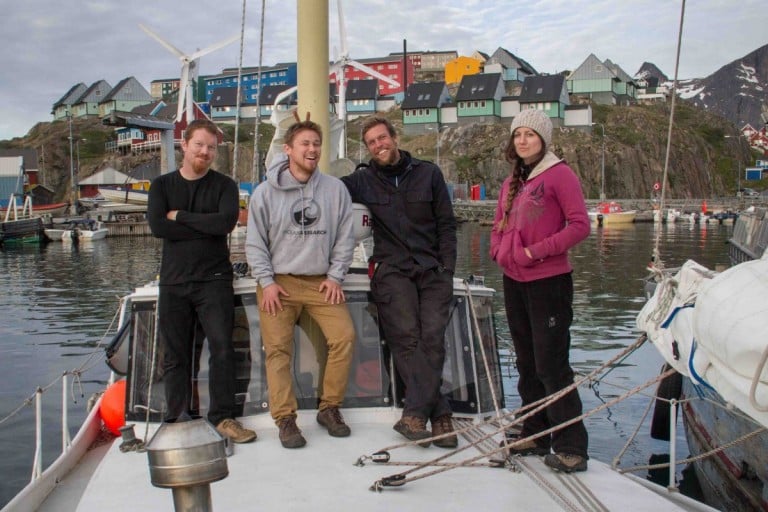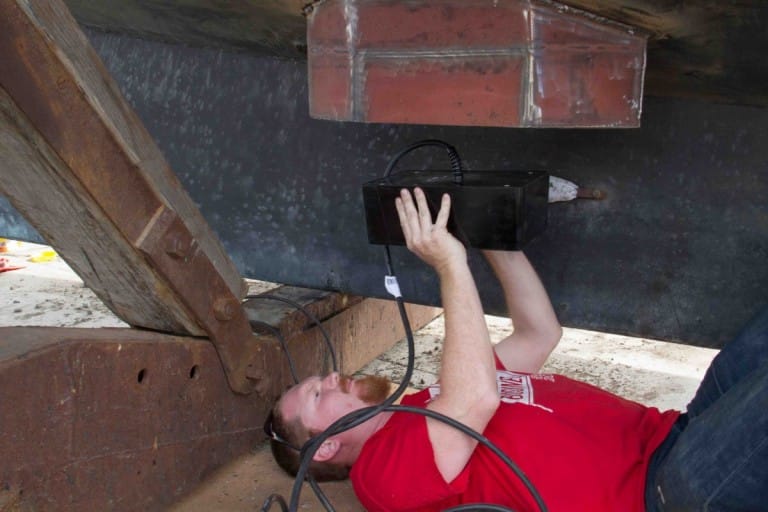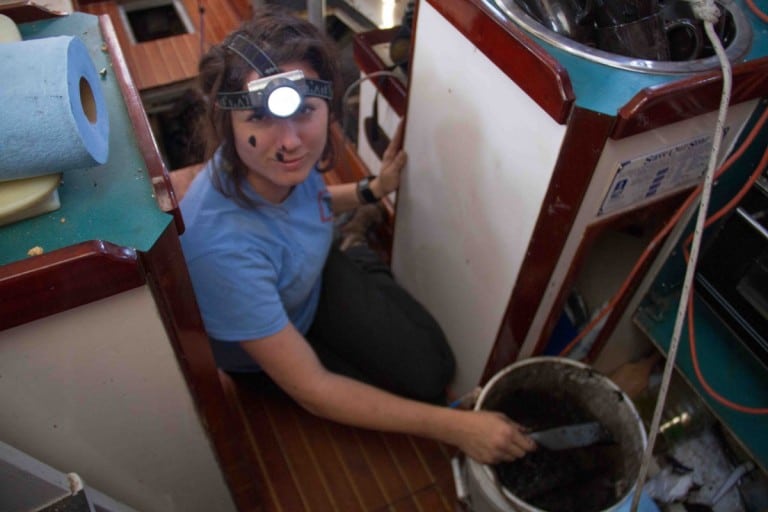
Boats need attention. If you don’t give them the attention they think they deserve they get mad at you and start slowly committing suicide. It’s amazing how you can winterize a perfectly functioning boat, leave it for the winter, and come spring it seems like everything is broken. It’s understandable if your engine doesn’t start easily after sitting for months but when metal brackets on the engine crack in half it leaves you scratching your head. Like a spoiled child, if you don’t show your boat enough attention it will have a hissy fit.
Eight months is a long time to leave your boat. Not that we had a choice, the winter lasts a long time in the Arctic, there is no reason to come back if the water is still frozen. I knew we would come across numerous issues with our vessel, but there was no way to tell what would and wouldn’t be working when we got there. Last year I had four months to prepare for our 2015 Greenland Climate Project, this year I only had two and a half weeks.
The first thing we had to do was install a $25,000 sonar system. This would have been a difficult task in Annapolis let alone Greenland. A sonar of this nature isn’t just a depth sounder, it’s an entire system. The heart of this system is an Odom CV/200, Odom let us borrow a loner unit which was very nice of them considering a CV/200 costs $15,000. We plan on buying this unit if we can raise enough money by the end of the expedition. We also needed a DGPS, a transducer the size of a cinderblock and a new Panasonic Toughbook powerful enough run hydrography software. The software we are using is Hypack, which is $8,000 for a one year license. Hypack sponsored us this year but we will have to pay for it if we want to use the program again next year.
When I say a transducer the size of a cinderblock, I kid you not. Not just is it huge but it also weighs 40lbs. Imagine bolting something that big to the bottom of your sailboat. If the transducer is big the housing to protect it is colossal. Lucky for us there was a good welder at the boatyard in Sisimiut who built a housing for our transducer of such quality that even the marine welders back in Annapolis would have a hard time matching it. In the middle of building this for us he got into an argument with his boss and quit his job. At first I was quite concerned but he told me that he will finish what he started and he did just that.

There was a ton of little issues. The batteries would no longer hold a charge, the water pressure pump wasn’t working nor was my fridge, the ships wiring had gone bad in serval places. It never ends, every time you fix one thing, two more things break. All you can do is try to keep up with the problems as they occur, but it’s hard to get ahead of the maintenance.
My trusty crew was up for the task. Nicole, Dana and I worked 14 hour days while Alexander filmed like there was no tomorrow. Although it was a lot of work we still found some time for play. We did a talk at the local high school about our research and a Danish chemistry teacher named Neils evited us back to his apartment for dinner. His apartment had the most incredible view overlooking the ocean. He cooked musk ox stew and the red wine poured freely. This became a bit of a routine; we would work all day in the boatyard then go over to Neils for stew, potatoes and wine. We even went to a concert with Neils, the band had a Greenlandic lead singer, a drummer from Ghana, a guitar player from Togo, and a bassist and pianists from Denmark; it was epic.
We finally put the boat back in the water, which was a nail biter. Every time they moved Ault they broke something. The first time it was my AIS antenna, the next time they broke four stantions, then they broke my Auto Helm windvane infrastructure. They fixed everything they broke but it made me nervous every time they moved the boat. They got the boat into the water without any issues, and then we became a fish sandwich.
They tied us off to a god knows how old, large wooden fishing vessel. At 5am the next day I wake up to the sound of an engine chugging right next to our boat. I come running out on deck in my socks just as this old fishing vessel slams into the one part of our boat that didn’t have fenders. I scrabbled around moving fenders and helping them tie off their lines. An hour later an even bigger old wooden fishing vessel ties off to that boat. We were now sandwiched between three large wooden fishing vessels, hence a fish sandwich.
It’s important to remember that this is their country and they are not set up to handle visiting sailboats. There is not a single marina in all of Greenland. These are work boats and the people on board are trying to make a living. We are the ones who are in their way. Everyone is very friendly about the situation as long as you smile and help them with their lines. But you do have to be careful, you can tie your boat off to a seawall for 45 minutes to get some groceries and come back to see four little boats tied off to you, or even worse an old wooden fishing boat that weighs many times more than you do. Greenland is not a place for fiberglass yachts with a beautiful paintjob and well varnished teak toe rails. Our sailboat is a work boat, so a few scratches here and there don’t bother us much.
With Ault in the water, the engine tuned up, the problems fixed, the scientific equipment installed it’s time to begin the expedition!

Fortitudine Vincimus
–Matt Rutherford








